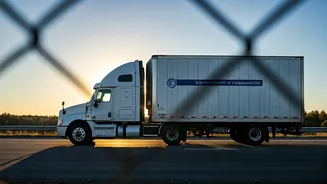The English Test Rule
The US has implemented stricter English proficiency testing for truckers, resulting in over 7,000 drivers being barred from operating. This policy change
affects a significant portion of the trucking workforce. The policy has been put into place to ensure that truckers can effectively understand and respond to instructions, traffic signs, and safety protocols, which are vital for road safety. The tests assess various aspects of English language skills, including reading, writing, and speaking. The tests assess truckers in a variety of situations. The new rules aim to standardize these language evaluations to enhance safety standards across the industry. The policy's goal is to ensure that all drivers can communicate effectively to prevent accidents and promote a safer environment for everyone.
Impact on Drivers
The English test crackdown has led to significant job losses, with over 7,000 truckers being affected across the United States. Indian-origin drivers have been disproportionately impacted by the policy. The sudden loss of employment has created hardships for drivers and their families. Many of those who have been affected were long-time drivers, who are now facing challenges in finding alternative employment. Some drivers are challenging the validity of the tests or looking at ways to improve their English proficiency to meet the new standards. The disruption in the trucking workforce has also triggered concerns within the industry about the supply chain and potential increases in transportation costs due to a shortage of qualified drivers.
Broader Implications
The policy change is raising wider concerns about potential discrimination and fairness within the trucking industry. Some argue that the tests may unfairly target certain groups, leading to a loss of diversity within the workforce. The trucking industry plays a vital role in the US economy, delivering goods to all parts of the country. With a significant number of drivers no longer qualified, there is a risk of disruptions to the supply chain and an increase in transportation costs. The new standards can lead to more thorough training. The issue also highlights the need for a comprehensive assessment of the testing process. The industry is debating the fairness and effectiveness of the new regulations, and considering their long-term effects on drivers and the country's economy.















